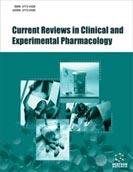Abstract
While facing potentially high morbidity from COVID-19 without known effective therapies, the off-label use of several non-specific drugs has been advocated, including re-purposed anti- viral (e.g., remdesivir or the lopinavir/ritonavir combination), biologic agents (e.g., tocilizumab), and antimalarial drugs such as chloroquine and hydroxychloroquine, in association with or without azithromycin. Data regarding the effectiveness of these drugs in treating COVID-19 has been shown in some trials and clinical settings, but further randomised controlled trials are still being carried out.
One of the main concerns regarding their widespread use, however, is their possible effects on the QT interval and arrhythmogenic potential. Some of these drugs have been associated with QT prolongation and Torsades de Point, a potentially lethal ventricular arrhythmia.
The review aims to highlight the magnitude of this problem, to quickly refresh clinically impacting cornerstones of QT interval and TdP pathophysiology, to summarize the available evidence regarding the QT and arrhythmia impact of drugs used in different clinical settings in COVID-19 patients, and to help the physicians dealing with the knowledge needed in the everyday clinical duties in case of doubts regarding QT-induced arrhythmias in this time of emergency.
Keywords: QT interval, COVID-19, cardiac arrhythmias, torsades de point, drugs management, non-arrhythmic mortality.
Graphical Abstract





























